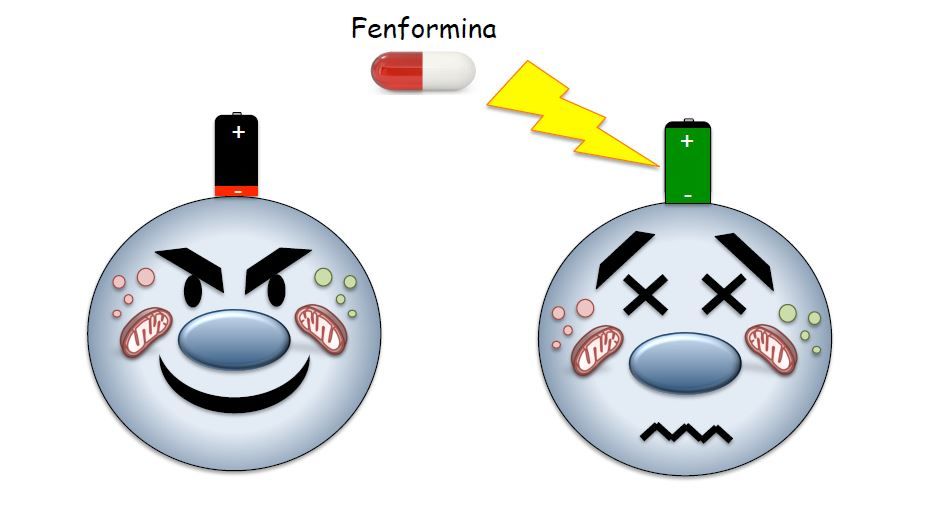
A “battery charger-like” Medicine to switch off Tumors
Medulloblastoma is the most common type of primary brain cancer in children, with an incidence, in Italy, of about 7 affected children per million. It is caused by DNA mutations, starting in the cerebellum, the part of the nervous system located at the base of the brain and aimed at controlling balance and coordinating movements. Chance of survival at 5 years after diagnosis is slightly higher than 60% and, to date, no effective prevention strategies have been identified (source AIRC).
A study conducted by researchers of Sapienza in cooperation with Istituto Pasteur Italia and Italian Institute of Technology (IIT) and coordinated by Gianluca Canettieri, aims to find a better cure for medulloblastoma. Their discovery, published on the journal Cell Reports, proves that phenformin, a drug used in the past as an antidiabetic along with the better-known metformin is able to stop the tumor growth.
To date, the therapeutic effects of this medicine have been unclear to the scientific community. The team’s work has revealed the reasons behind phenformin’s biochemical inner workings. This molecule operates in a sort of “central switch” denominated mGPD, present in the mitochondria, and activates an alteration of the electric charge in the tumor cell. This electrical alteration, contrary to what happens in a sane cell, causes the inhibition of the tumor growth.
It was widely believed, within the scientific community, that this drug acted by “choking” and “starving” the tumor, that is, operating on cellular respiration, whereas, for the very first time, the study can prove that the most likely “mechanism” is a kind of backward-operating battery: phenformin “charges” the tumor cells to switch them off.
“What happens in a cell treated with phenformin – says Gianluca Canettieri – is an oxidation-reduction process, that is, something similar to what happens when we recharge our batteries with a charger: we increase the electrical charge in the cell. But the tumor cells have batteries that, once recharged, start a process that slows down their growth. Moreover, even if we have been studying the medulloblastoma, we think that this “on/off” process could be effective on other tumors too, as shown by some of our most recent data."
“These observations – says Laura Di Magno, the young researcher, who works in IIT and first author of the research – spur us to focus our next study on finalising new antitumor strategies based on drug usage or even on specific food able to raise the cell oxidation-reduction status and recharging the antitumor batteries. Moreover, if future studies will confirm the preclinical evaluations, phenformin itself could represent a new effective weapon against some forms of cancer, including brain tumors."
We can, then, assume the existence of food and nutritional supplements able to increase cell redox, but, at the moment, this is just a theory we are examining in depth. The team’s work will continue and a clinical application might be just around the corner. This study has to date been conducted on cells and animal models but application on humans may be possible in the future.
This research was supported by Fondazione AIRC – Cancer Research, Istituto Pasteur Italia - Fondazione Cenci Bolognetti, and Italian Institute of Technology.
References:
Phenformin Inhibits Hedgehog-Dependent Tumor Growth Through a Complex I-Independent Redox/Corepressor Module - Laura Di Magno, Simona Manni, Fiorella Di Pastena, Sonia Coni, Alberto Macone, Sara Cairoli, Manolo Sambucci, Paola Infante, Marta Moretti, Marialaura Petroni, Carmine Nicoletti, Carlo Capalbo, Enrico De Smaele, Lucia Di Marcotullio, Giuseppe Giannini, Luca Battistini, Bianca Maria Goffredo, Egidio Iorio, Enzo Agostinelli, Marella Maroder and Gianluca Canettieri - Cell Reports (30, 1-18 February 11 2020) DOI https://doi.org/10.1016/j.celrep.2020.01.024
Further Information
Gianluca Canettieri
Department of Molecular Medicine
gianluca.canettieri@uniroma1.it
